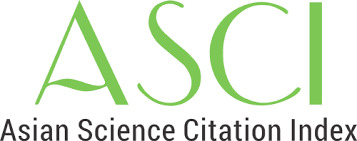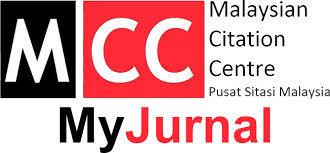MADA ISTIKHDAM ABA’I AL-MURAHIQIN FI AL-URDUN LI ANMAT AL-WISATAH AL-DIMUQRATIYYAH FI AL-‘ALAM AL-RAQMI [THE EXTENT TO WHICH PARENTS OF TEENAGERS IN JORDAN USE DEMOCRATIC MEDIATION PATTERNS IN THE DIGITAL WORLD]
Keywords:
parental awareness, digital world, parental mediation, democratic mediation, teensAbstract
Abstract: : In the family, there is often a continuous battle between parents and children regarding exposure to the digital world, especially in adolescence, in which children try to form themselves and be independent from their families, and the battle often results in negative consequences, including depriving children of the opportunity to fully integrate into the digital world And take advantage of its opportunities, and enhance their exposure to the dangers of the digital world because of the loss of confidence in the family under the means of control, order, forbidding and preventing communication, without awareness, understanding and persuasion, and the question posed by this study is to what extent parents of adolescents in Jordan use supportive parental mediation strategies (democracy) such as active mediation and participatory mediation And remote mediation. Methodology: The study used the descriptive and analytical approach, through an intentional core sample of 469 items, through the application of a measure of the use of teenage parents in Jordan to patterns of democratic mediation in the digital world. the data were processed statistically, depending on the Statistical Package for social science. Results: Fathers use democratic mediation to a small degree in general, and there are differences in the use of democratic mediation between males and females in favor of male fathers, between ages in favor of the elderly, between educational levels in favor of the most educated, and between income levels in favor of high-income people. Conclusion: From the above, it can be concluded that parents ’awareness of the importance of democratic mediation strategies in integrating their adolescent children in the digital world is limited, and they need awareness and training to be able in turn to help their children integrate into the digital world without risk.
References
Alcolea, D. G., Reig, R., & Mancinas, C. R. 2020. Currículo de Alfabetización Mediática e Informacional de la UNESCO para profesores desde la perspectiva de la Estructura de la Información. Comunicar: Revista Científica de Comunicación y Educación, 28(62), 103-114.
Au, M., ,& Lam, J. 2015. Social media education: Barriers and critical issues. In Technology in Education. Transforming Educational Practices with Technology (pp. 199-205). Springer, Berlin, Heidelberg.
Ayt ‘Isa Faridah. 2016. Al-Tarbiyyah al-‘Ilamiyyah wa al-Thaqafah al-Tasharukiyyah = Le Média Éducation et la Culture Participative. Majallat al-Turath, 46(4038): 1-10.
Bilaghimas Barakat. 2016. al-‘Abd al-‘Ittisali wa al-Tiknulujiyy li ‘Ulamat wa ‘Atharihi ‘ala al-‘Alaqat al-‘Ijtima’iyyah: al-‘Usrah al-Jaza’iriyyah Namuzajan. Majallat al-Hikmah li al-Dirasat al-‘Islamiyyah. (7): 31-54.
Chiong, C., ,& Shuler, C. 2010. Learning: Is there an app for that. In Investigations of young children’s usage and learning with mobile devices and apps. New York: The Joan Ganz Cooney Center at Sesame Workshop. pp. 13-20.
Fedorov, A., & Levitskaya, A. 2015. The framework of media education and media criticism in the contemporary world: The opinion of international experts.
Hart, A. 2018. Textual pleasures and moral dilemmas: Teaching media literacy in England. In Media Literacy Around the World. pp. 199-211.
Hoover-Dempsey, K. V., ,& Sandler, H. M. 1997. Why do parents become involved in their children’s education?. Review of educational research 67(1): 3-42.
Jenkins, H., Purushotma, R., Weigel, M., Clinton, K., ,& Robison, A. J. 2009. Confronting The Challenges of Participatory Culture: Media Education for the 21st Century. Mit Press.
Khiangte, L., Dhar, R. S., Kumar, K., ,& Pachuau, J. L. 2018. State-of-the-art MOSFET and TCAD in the advancement of technology: A review. In Mizoram Science Congress 2018 (MSC 2018) pp. 37-41. Atlantis Press.
Na’imah Rahmani. 2014. ‘Idman al-‘Atfal ‘ala al-‘Intarnat Jarimah Raqimah. Majallah al-Turath (12): 53-64.
Poliquin, A. 2016. Media Literacy Education: A Media Literacy Campaign on the Social Significance of Meda Literacy and Its Educational Need. ProQuest LLC
Singh, M. M., Amiri, M., & Sabbarwal, S. 2017. Social Media Usage: Positive And Negative Effects on The Life Style of Indian Youth. Iranian Journal of Social Sciences and Humanities Research 5(3).
Vygotsky LS. 1986. Thought and language. Cambridge: MIT Press
Warren, R. 2001. In words and deeds: Parental Involvement and Mediation of Children's Television Viewing. The Journal of Family Communication 1(4): 211-231.
Wisniewski, P., Ghosh, A. K., Xu, H., Rosson, M. B., ,& Carroll, J. M. 2017. Parental Control vs. Teen Self-Regulation: Is there a middle ground for mobile online safety? Proceedings of the 2017 ACM Conference on Computer Supported Cooperative Work and Social Computing pp. 51-69













